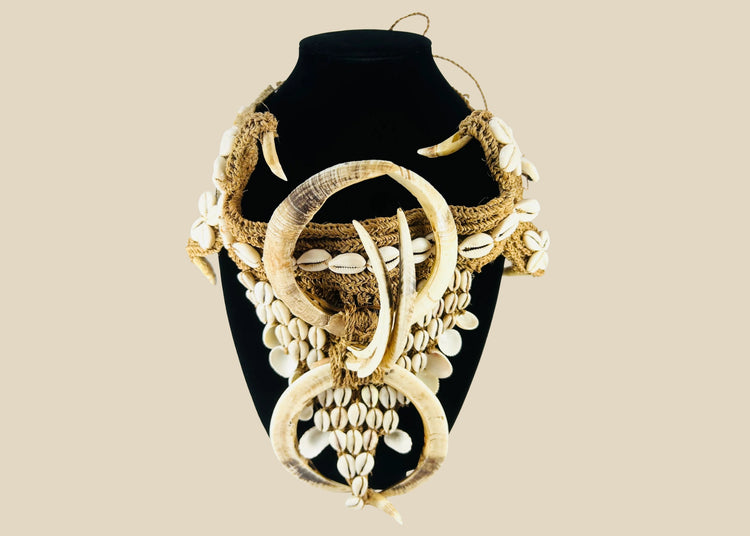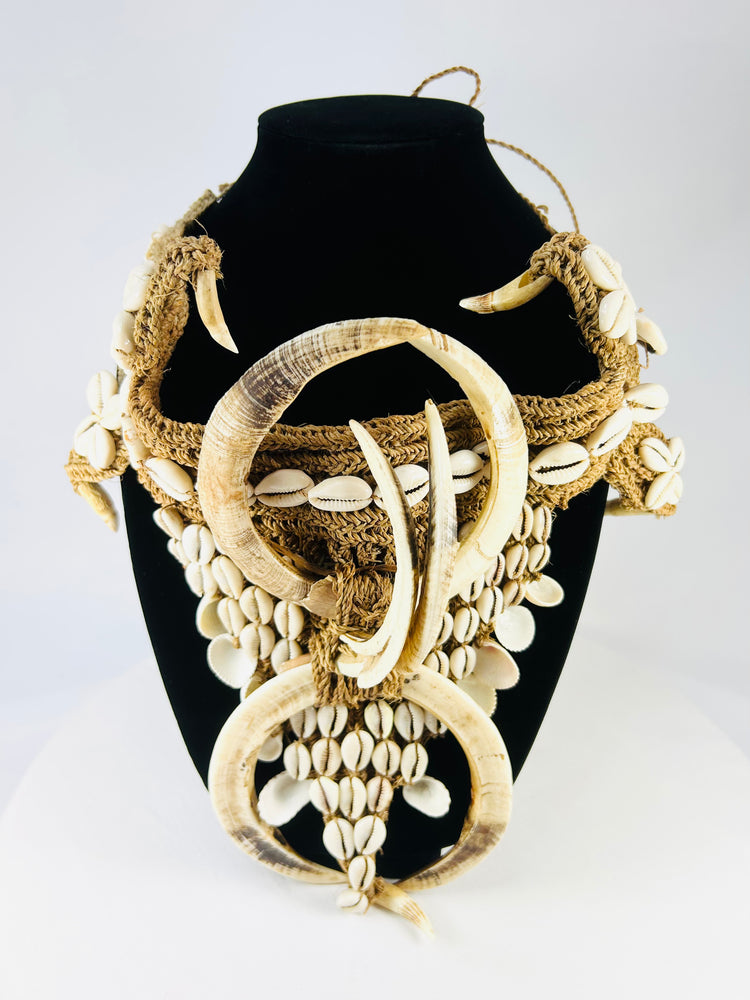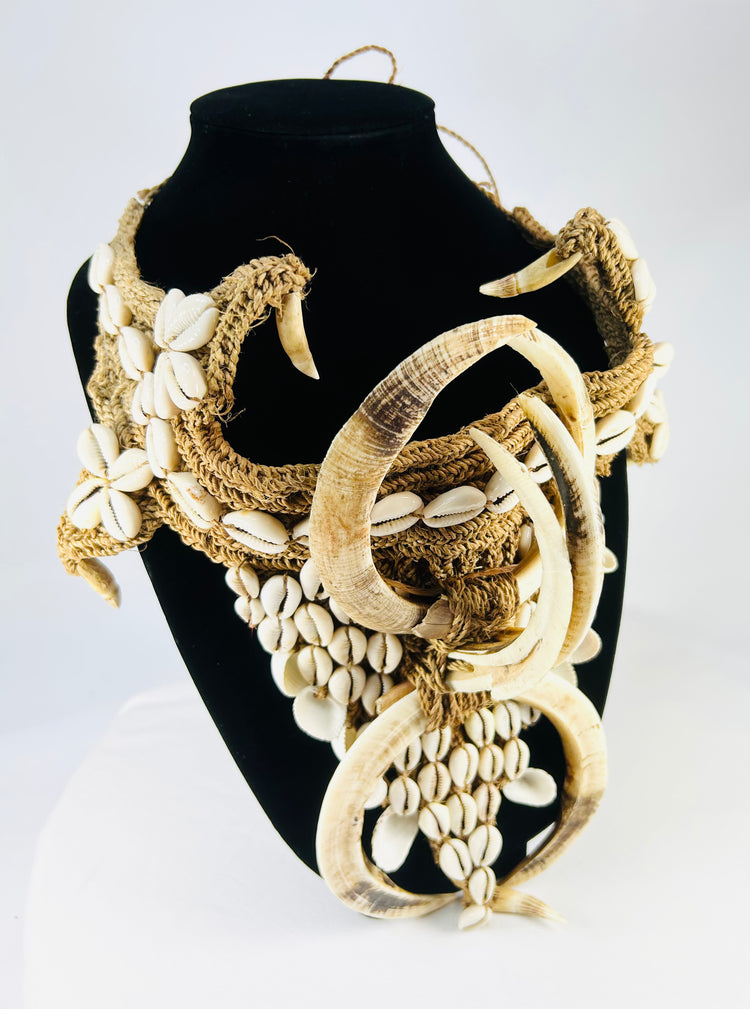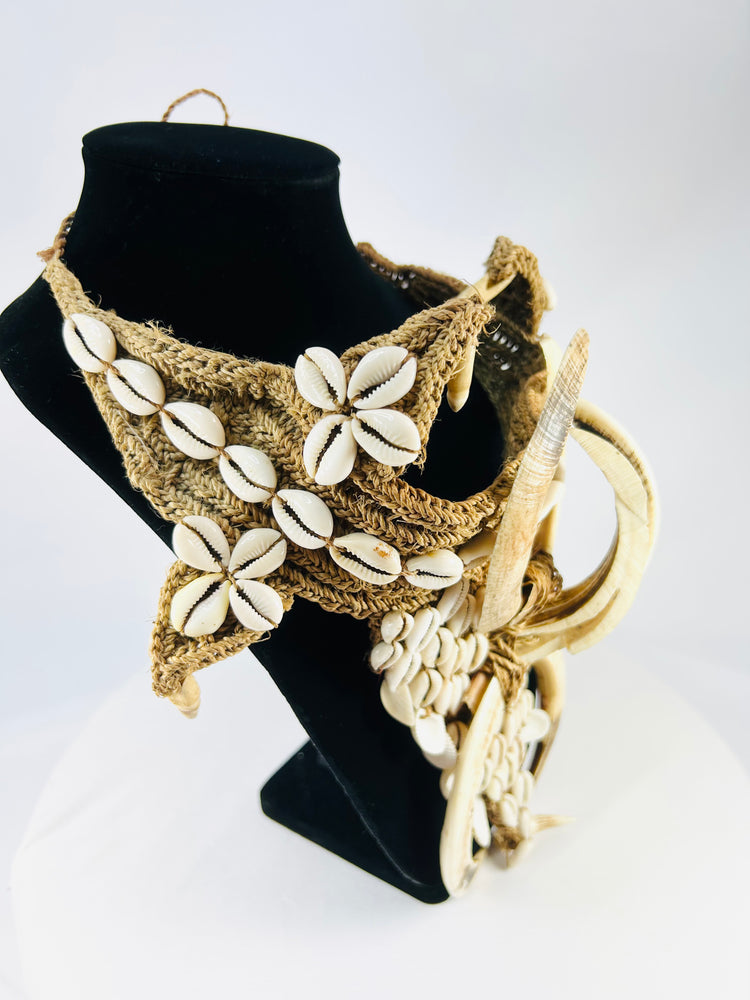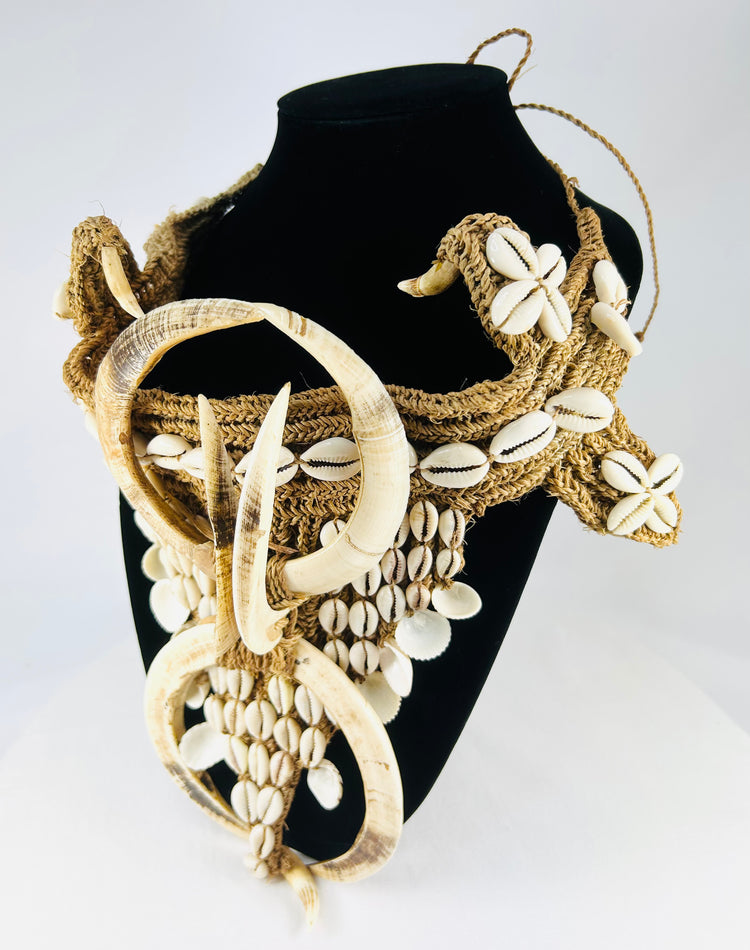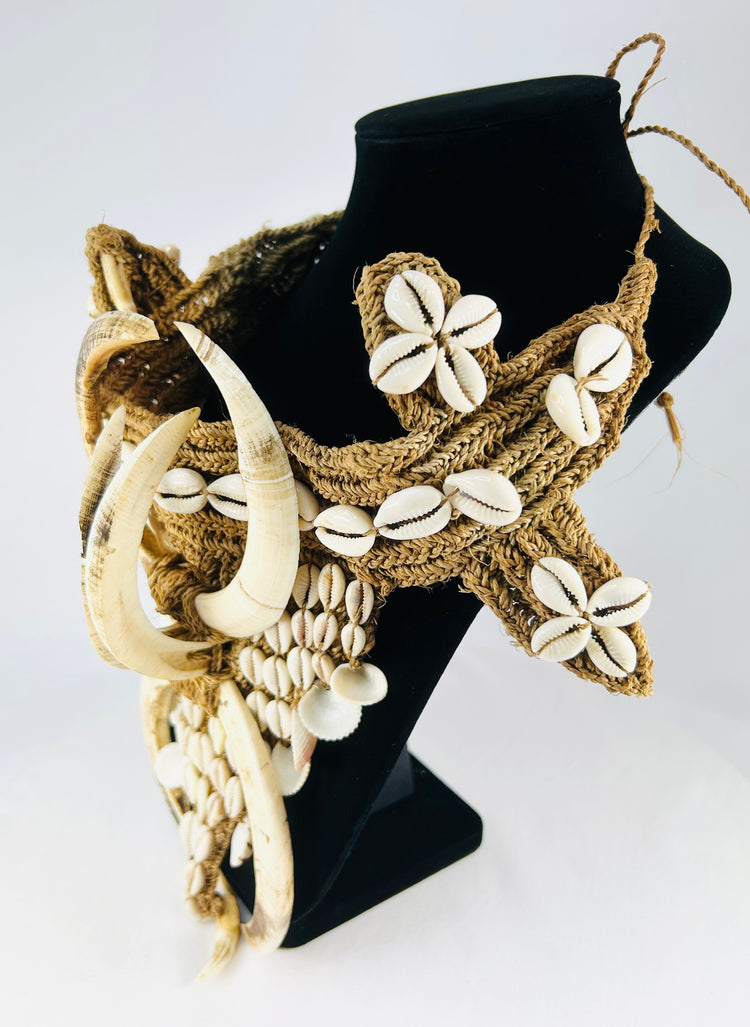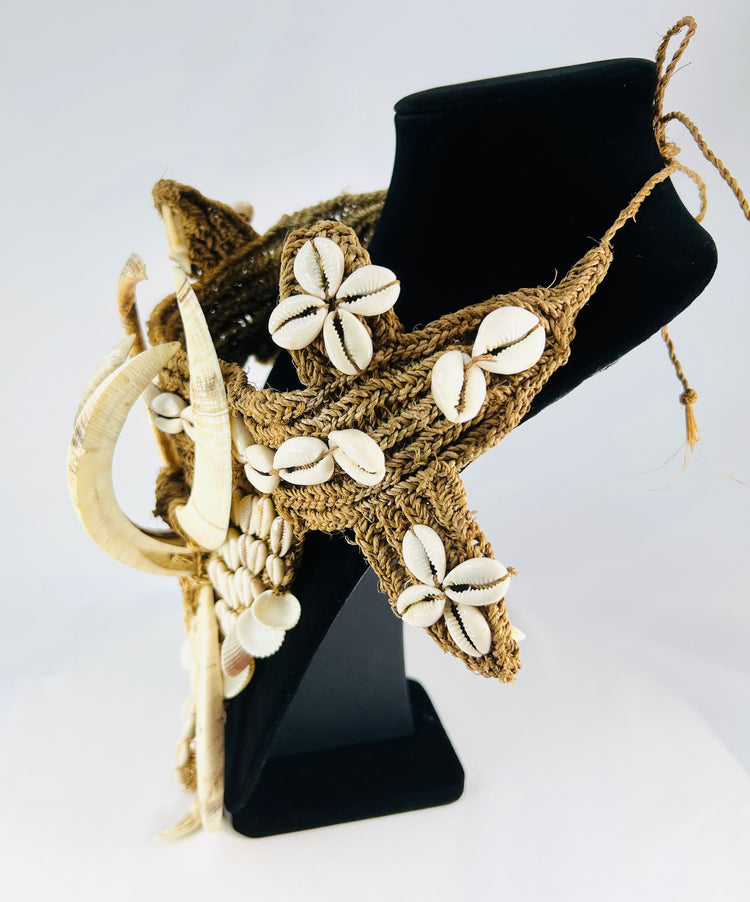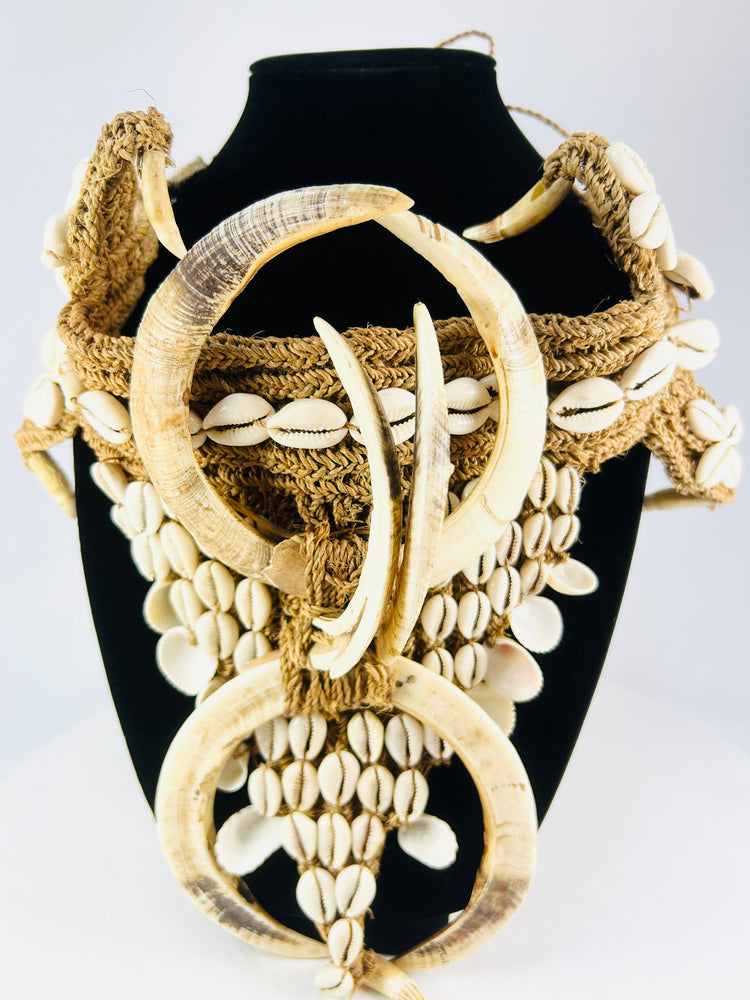Antique Tribal Regalia | Ceremonial Ornament of Cowrie Shells & Boar Tusks | Circa Early 20th Century
Description
More
Less
Historical Context & Origin
Region: Papua New Guinea, Melanesia
Material: Boar tusks, cowrie shells, fiber cord, and natural materials
Period: Early 20th century
Description
This impressive ceremonial apron from Papua New Guinea is constructed from rows of polished boar tusks and cowrie shells, hand-strung together with natural fiber bindings. Measuring nearly four feet in length, the piece was designed for use in dance and ceremonial display, where its dramatic movement and gleaming organic materials conveyed prestige and ancestral power. Such aprons were worn by men during initiations, festivals, and clan gatherings, serving as powerful visual markers of social standing and spiritual connection.
Features
- Large ceremonial apron composed of boar tusks and cowrie shells
- Hand-strung with natural fiber cords and bindings
- Designed for dramatic movement in ritual dance
- Traditional construction using authentic indigenous materials
- Strong ethnographic presence for display as tribal art
Cultural Significance
In Papua New Guinea, boar tusks and cowrie shells functioned as important forms of wealth and exchange, often used in bride price negotiations, ceremonial gift-giving, and status affirmation. Their incorporation into wearable regalia symbolized fertility, strength, prosperity, and protection, reinforcing both spiritual and social roles. Ceremonial ornaments such as this were central to clan identity and communal ritual, embodying the interconnection of art, wealth, and ancestral heritage. Today, they remain highly valued as expressions of Melanesian culture and artistry.
Condition
Good ethnographic condition. Expected surface wear to tusks and shells from ritual use. Fiber bindings intact with some fraying. No modern repairs; retains original patina of ceremonial handling.
Dimensions (approximate)
Length: 49 in
Age
Early 20th century
Learn More
Dive into the remarkable history and ancestral traditions of Papua New Guinea
Explore Our Curated Collection of Ethnographic Relics & Tribal Artifacts
Description
Historical Context & Origin
Region: Papua New Guinea, Melanesia
Material: Boar tusks, cowrie shells, fiber cord, and natural materials
Period: Early 20th century
Description
This impressive ceremonial apron from Papua New Guinea is constructed from rows of polished boar tusks and cowrie shells, hand-strung together with natural fiber bindings. Measuring nearly four feet in length, the piece was designed for use in dance and ceremonial display, where its dramatic movement and gleaming organic materials conveyed prestige and ancestral power. Such aprons were worn by men during initiations, festivals, and clan gatherings, serving as powerful visual markers of social standing and spiritual connection.
Features
- Large ceremonial apron composed of boar tusks and cowrie shells
- Hand-strung with natural fiber cords and bindings
- Designed for dramatic movement in ritual dance
- Traditional construction using authentic indigenous materials
- Strong ethnographic presence for display as tribal art
Cultural Significance
In Papua New Guinea, boar tusks and cowrie shells functioned as important forms of wealth and exchange, often used in bride price negotiations, ceremonial gift-giving, and status affirmation. Their incorporation into wearable regalia symbolized fertility, strength, prosperity, and protection, reinforcing both spiritual and social roles. Ceremonial ornaments such as this were central to clan identity and communal ritual, embodying the interconnection of art, wealth, and ancestral heritage. Today, they remain highly valued as expressions of Melanesian culture and artistry.
Condition
Good ethnographic condition. Expected surface wear to tusks and shells from ritual use. Fiber bindings intact with some fraying. No modern repairs; retains original patina of ceremonial handling.
Dimensions (approximate)
Length: 49 in
Age
Early 20th century
Learn More
Dive into the remarkable history and ancestral traditions of Papua New Guinea
Explore Our Curated Collection of Ethnographic Relics & Tribal Artifacts
You May Also Like






















